Journal of Oceanography and Marine Research
Open Access
ISSN: 2572-3103
ISSN: 2572-3103
Review Article - (2022)Volume 10, Issue 3
During our regular monitoring study of phytoplankton in Dubai coastal waters, moderate bloom of a marine dinoflagellate species, protoperidinium quinquecorne was observed for the first time on 8th to 10th November, 2017 near Al Mamzar Croniche. The extent of the bloom in relation to the water quality of the region is reported. P. quinquecorne bloom was found in patches of about 700 m in length and 50 m width along the shoreline forming discoloration of water. The cell counts during the bloom period was 66.0–36.8 x 103 L-1 at different sampling locations. Nutrient concentration in the study area during the bloom period was found to be normal. However, elevated levels of chlorophyll-a and carotenoids were evident during the bloom period. It is observed that the density of the bloom is related to the surface water temperature ie. , the density increased drastically when the surface water temperature was high during day time forming patches of the bloom. Fish kill was not observed in the bloom region during this period.
Algal bloom; Protoperidinium quinquecorne ; First record; Numerical abundance; Physico-chemical; Chlorophyll-a; Phaeophytin; Carotenoids
Protoperidinium quinquecorne (Abé) Balech is one of the most notable species of the genus Protoperidinium and is considered a significant component of the coastal and estuarine phytoplankton, causing blooms at times in different regions. This species can occur in very high concentration in coastal waters, causing discolorisation of the water body and are sometimes associated with fish kills [1]. While some phytoplankton species are known to produce toxins that can be accumulated by filter-feeding organisms, making them hazardous for humans, blooms of other (nontoxic) species can result in high fish mortalities caused by the development of low oxygen conditions or gill clogging and damage due to mucus secretion and asphyxiation [2].
The order peridiniales include dinoflagellates having a transverse flagella furrow normally located within the middle third of the length of cell. The theca is composed of several tens of cellulose plates organized in several series paralleling the transverse furrow. They are free-living, photosynthetic or non-photosynthetic dinoflagellates occurring in marine, brackish and freshwater environments [3]. There are no pervious reports of blooms of P. quinquecorne along Dubai coastal waters. This study describes for the first time the conditions in which P. quinquecorne proliferated to form bloom and tend to disappear when sea surface temperature drop sharply at Al Mamzar Croniche.
Phytoplankton and surface water samples were collected from two locations (25°19’0.42’’N; 55°20’33.14’’E and 25°18’47.53’’ N; 55°20’23.74’’E) at Al Mamzar Croniche on 8th and 10th November, 2017 (Figure 1). Phytoplankton samples were collected from surface water using a Niskin water sampler and preserved in Lugol’s iodine solution. One litre of the sample was poured into a measuring cylinder and allowed to settle for 24 hrs. The water was slowly decanted without disturbing the settled phytoplankton and made up to 100 ml. From this, 1ml of phytoplankton sample was taken by a pipette and then slowly transferred to a Sedgwick-Rafter slide (1 ml capacity). Initially the samples were examined for qualitative analysis, and then the taxa were counted under Leica inverted microscope (model: DMI1) with attached camera (Leica, Eclipse 50i with 10X to 100X magnification). The same procedure was repeated three or four times. The number of individuals in each taxa present in 1L of sample, were then calculated. The identification of phytoplankton bloom was done by following standard taxonomic guide [4].
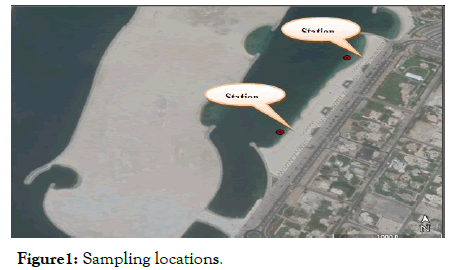
Figure 1: Sampling locations.
Temperature, dissolved oxygen, pH and salinity were measured by a pre-calibrated YSI 6600 V2 multi-parameter water quality instrument. Water samples for nutrients and phyto-pigments estimation from surface water was collected using Niskin water sampler. Samples were preserved in amber glass bottles in an ice box during transportation and analyzed by Dubai municipality central laboratory department. Analyses were carried out for various parameters using standard methodologies and detection limits as specified in EPA, USEPA and APHA (APHA 1998).
Results of the field study on 8th and 10th November 2017 indicated intense bloom patches of Protoperidinium quinquecorne along the Dubai coast as shown Figure 2a. This bloom persisted for three days and then slowly disappeared. Laboratory analysis confirmed that the discoloration of coastal waters was due to the bloom of P. quinquecorne (Figure 2b). The bloom was observed in patches and occupied about 700 m length and 50 m width along the shore line of Al Mamzar Croniche. Numerical abundance (Quantitative) of phytoplankton cell density was 52.8 x 103L-1 at station 1 and 66.0 x 103L-1 at station 2 on 08th and 29.8 x 103L-1 at station 1 and 36.8 x 103L-1 at station 2 on 10th November, 2017 respectively. In general, quantitatively, during the Protoperidinium bloom, cell density at station 2 was higher than station 1. Physico-chemical properties of the sampling locations during the bloom event are shown Figures 3-8.
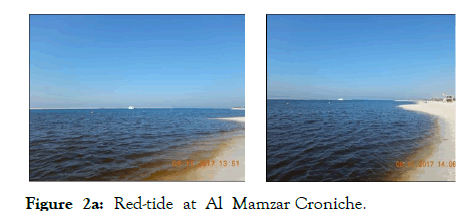
Figure 2a: Red-tide at Al Mamzar Croniche.
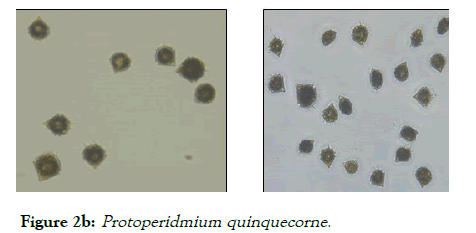
Figure 2b: Protoperidmium quinquecorne.
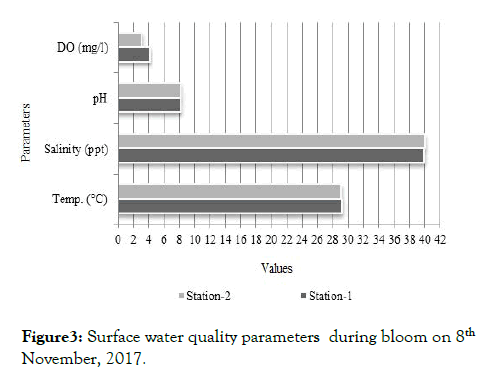
Figure 3: Surface water quality parameters during bloom on 8th November, 2017.
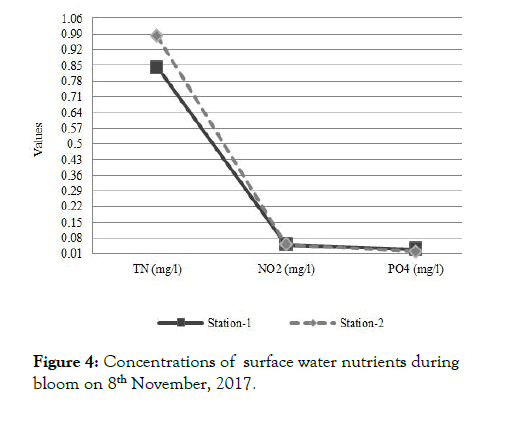
Figure 4: Concentrations of surface water nutrients during bloom on 8th November, 2017.
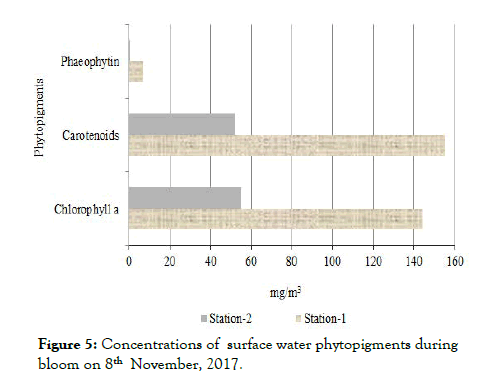
Figure 5: Concentrations of surface water phytopigments during bloom on 8th November, 2017.
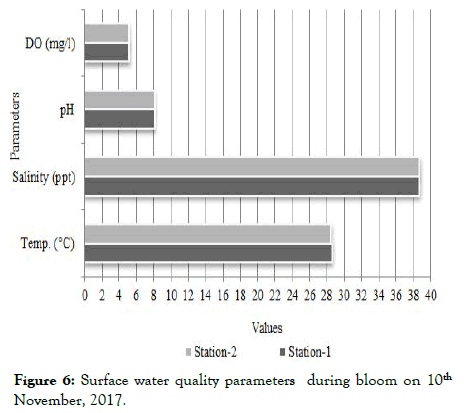
Figure 6: Surface water quality parameters during bloom on 10th November, 2017.
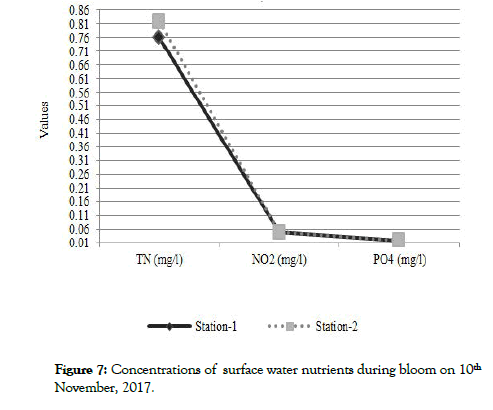
Figure 7: Concentrations of surface water nutrients during bloom on 10th November, 2017.
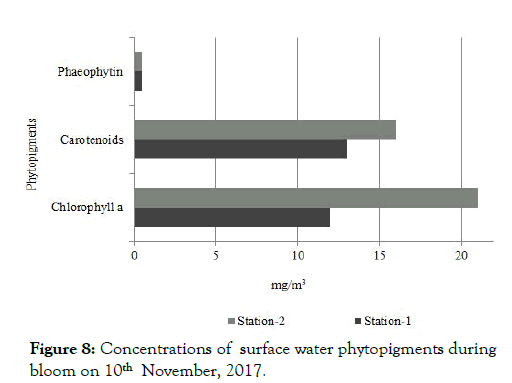
Figure 8: Concentrations of surface water phytopigments during bloom on 10th November, 2017.
During the bloom period, the sea surface water temperature varied from 28.5°C to 29.2°C at station 1 and 2. The temperature values did not show much variation both at locations and days. Surface salinity recorded a maximum of 39.99 ppt at station 2 on 8th and the minimum of 38.69 ppt at station 1 on 10th November, 2017. Both maximum and minimum dissolved oxygen values were observed from station 1. While the maximum of 5.19 mg/l was observed at station 1 on 10th, the minimum of 3.13 mg/l was at station 1 on 8th November, 2017. However, lower DO values observed during first day of bloom persisted for some time. The pH values varied from 8.12 to 8.22 on 10th and 8th November, 2017 respectively exhibiting insignificant variation.
The concentration of total nitrogen varied from 0.84 to 0.98 mg/l, nitrate-nitrogen value from 0.05 mg/l and phosphatephosphorus concentrations from 0.03 to 0.02 mg/l on 8th November, 2017 at station 1 and 2 respectively (Figure 4). On 10th November, the concentration of total nitrogen varied from 0.76 to 0.82 mg/l, nitrate-nitrogen value from 0.05 mg/l and phosphate-phosphorus concentrations from 0.02 mg/l at stations 1 and 2 respectively (Figure 7). It is observed that the levels of phosphate-phosphorus, nitrate-nitrogen and total nitrogen concentrations did not show any significant higher variations during the bloom period from both the locations sampled.
The values of chlorophyll-a (55-144 mg/m3), carotenoids (52-155 mg/m3) and phaeophytin (0.5-7 mg/m3) recorded on 8th November at stations 2 and 1 respectively are shown in Figure 5. Results of phyto-pigments collected on 10th November are given in Figure 8. Chlorophyll-a values were found to be from 12-21 mg/m3, carotenoids from 13-16 mg/m3 and Phaeophytin from 0.5 mg/m3 on 10th November, 2017 at stations 1 and 2 respectively. It is observed that chlorophyll-a and carotenoids recorded higher values on 8th compared to 10th values.
Red-tide bloom of moderate intensity, creating reddish to brownish sea surface color with uneven patches of algae was observed during a short period of 8th-10th November, 2017 along Al Mamzar Croniche shore beaches. The red-tide bloom in the phytoplankton samples was dominant with one single species of dinoflagellate and identified as Protoperidinium quinquecorne. The present red-tide bloom phenomenon is reported for the first time from the Dubai coastal waters in this communication. This marine dinoflagellate species of P. quinquecorne has been reported earlier for the first time accompanied by massive kill of small pelagic fishes in Yemani coastal waters of the Southern Red Sea [5]. However, this bloom conditions in our observation at Dubai coastal waters has not caused any fish mortality. In several parts of the world, fish kill have been attributed to low dissolved oxygen levels generated by high biomass blooms and not necessarily due to toxicity [6,7]. However, dissolved oxygen concentrations recorded during this present bloom period were marginally low (3.13 mg/l) on the first day and progressively increased later on. The dominance or higher population of P. quinquecorne appears to be related to its unique ability to blossom under tropical conditions [8]. Several studies have reported that P. quinquecorne can tolerate a wide range of salinities, growing best at relatively high salinities when they are capable of forming red tide blooms under high light and high temperature conditions [9,1]. Our results have shown that the levels of temperature and salinity recorded were in the range of 28.5-29.2°C and 38.69-39.99 ppt respectively with calm weather conditions. Brownish patches of P. quinquecorne were observed when the tidal water with temperature was rising during the day time, suggesting that the bloom observed near the Al Mamzar Coniche area was due to very less tidal influx and current flow with stagnant closed water bodies. The present bloom condition probably occurred mainly due to the result of an accumulation processes. However, blooms tend to disappear when temperatures drop sharply.
The blooms of P. quinquecorne have been associated with higher levels chlorophyll a in many previous studies [10,1], which is coherent with our results of elevated chlorophyll a, carotenoids and phaeophytin during the bloom period of day 1, 8th November than day 2 of 10th November, 2017. Such levels and conditions were identified as the most favorable for the bloom formation of P. quinquecorne along Dubai coastal waters. However, this seasonal bloom conditions favored proliferation of P. quinquecorne. It has been reported that P. quinquecorne forms bloom in eutrophic, polluted brackish environments and population are generally affected by the salinity levels. According, to the available information we can draw to a reasonable conclusion that P. quinquecorne is well adapted to shallow water tropical embayment.
Phytoplankton blooms usually occurs in summer, when the concentration of inorganic nutrients (silicate, nitrogen and phosphate compounds) increases in the water column. Nitrogen and phosphorus compounds are essential plant nutrients, which occur naturally in sea water [11,12]. However, steady winds drive the suspended sediments from the shallow bottom of the euphotic zone causing upwelling of nutrient waters [13]. This point promotes the view of massive increase of phytoplankton and formation bloom of single species. During the period of P. quinquecorne bloom, the nitrate and phosphate-phosphorus concentrations in our study area was low, whereas the total nitrogen (0.76-0.98 mg/l) was slightly high. The high values of total nitrogen during the P. quinquecorne bloom could be associated with flow of nutrients and decomposition of organic matter respectively. This dominance was attributed to the ability of this species to thrive under a variety of physical and chemical conditions. The presence of such bloom species in our waters is not well documented. Detailed studies are required to understand the dynamics of these blooms along with the casual factors initiating such blooms. This type of information and knowledge would be beneficial in the future for the prevention and management of algal bloom in Dubai coastal waters.
Citation: Murugesan K (2022) First record of Protoperidinium Quinquecorne bloom in Dubai Coastal waters at Al Mamzar Corniche. J Oceanogr Mar Res. 10:256.
Received: 22-Aug-2022, Manuscript No. OCN-21-7244; Editor assigned: 24-Aug-2022, Pre QC No. OCN-21-7244(PQ); Reviewed: 12-Sep-2022, QC No. OCN-21-7244; Revised: 16-Sep-2022, Manuscript No. OCN-21-7244(R); Published: 26-Sep-2022 , DOI: 10.35248/2572-3103.22.10.256
Copyright: © 2022 Murugesan K, et al. This is an open-access article distributed under the terms of the Creative Commons Attribution License, which permits unrestricted use, distribution, and reproduction in any medium, provided the original author and source are credited.